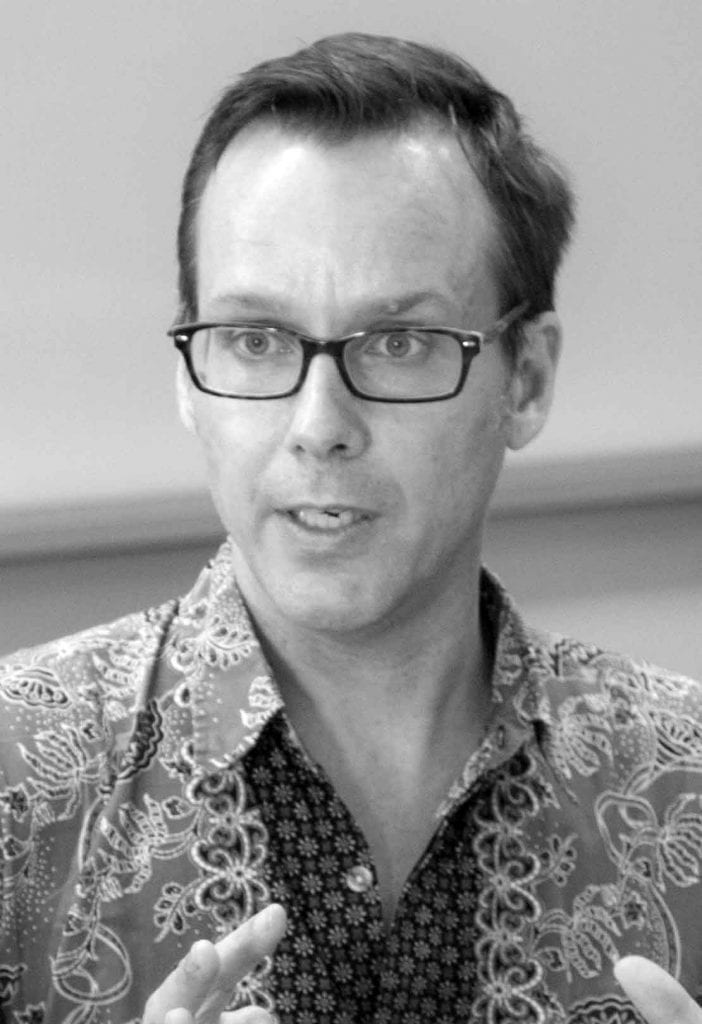Connor GRAHAM
Tembusu College
Connor draws parallels between an early 20th-century novella and the impact of the COVID-19 pandemic on modern life, and reflects on the ways in which educators can help their students learn better amidst this sea of change.

In “The Machine Stops”, first published in 1909, the English novelist E. M. Forster describes a world entirely dependent on technology, in which people are cocooned from one another and individuated through its insulating effects. People live in artificially lit and ventilated single rooms, and they interact via “round plates” and “pneumatic post”. According to Forster, “People never touch one another”, sunlight never touches people, and second-hand “ideas” are all important. It is a world regulated and mediated by the Machine, an all-encompassing hive-like underground system of mind-numbing convenience that determines how people eat, sleep, wake, and even live and die.

Photo courtesy of Wikipedia Commons
In the end, the Machine does indeed stop. The people in the story suffer an apocalypse. “Scraps of the untainted sky” become visible once more.
Reading this short story, recommended by a former student, with a Tembusu College undergraduate seminar during a global pandemic was strangely and unwelcomely apt. Indeed, resemblances with College and university life seemed to become more and more uncannily evident as the semester progressed. It seems we can learn a lot from a fictional work written over a century ago.
For some of the machinery did indeed stop. Or at least it started to break down, despite ‘fix’ after attempted ‘fix’ and brave collective efforts. COVID-19 would not be managed. And unlike Forster’s short story, Fellows teaching at Tembusu showed that collective human intervention, ingenuity, and judgment can accomplish much.
Classroom temperature-taking supported discussing institutional data collection. Necessary chair rearrangement for safe distancing shaped increasing interaction and talk in seminars. An ‘informational’ projector screen became a space for ‘hosting’ a remote, quarantined peer teacher. A seminar room became a bookable, hot-desked module project space with art equipment and materials, surgical masks, and disinfectant.

Photo courtesy of Wong Mun Yee
A final serious play exercise became a summative online story-telling task. Real-time, co-present learning reflections became pre-recorded ‘first person’ videos for a small collective.
The expected use of Telegram, an instant messaging app, for mass information sharing was intentionally challenged: it became a platform for more deliberative, intimate, real-time (if slow) expression. The productivity software Padlet’s support for visual ideation was exploited to generate and discuss draft essay ideas. Finally, the video conferencing platform Zoom has transformed from a merely a software for peer-to-peer meetings to a stage for the performance of final works: instances of fakes, Internet fictions, projects rethinking time.
So, while some machinery started to grind to a halt, the Seminar continued, albeit in an unfamiliar, bespoke form.
Forster himself lived in a time of great technological change, a point made by historians of technology. Any Web search for “19th century inventions” reveals a long list, many of which shape our lives today: the typewriter; the telephone; the telegraph; the radio. Me being able to send the query that retrieved this information would not be possible without these technologies being invented. Nor would I be able to write and publish this piece as it is without them.
There is another reading of Forster’s novella though: that last semester the Machine started. As educators, we have become highly dependent on generic Internet-related technology, much of which the university did not design, create or even own and that most people don’t fully understand, to teach and interact with students. Students and Fellows at the College alike were cocooned in artificially lit, ventilated rooms even more than usual. Seminars were conducted via video-conferencing technology and through text—whether in messages, documents or websites. We fiercely regulated our distance from one another and refused to shake hands.

Photo courtesy of IDGConnect
It would be naïve to argue that these measures were not necessary. Yet many of the students who read “The Machine Stops” made the kinds of comparisons that I have just made through their essays. In fact, one student observed that: “The power of the Machine is hence not attributed to how well it can fulfil people’s needs and/or desires (as initially perceived), but how it can completely shape what they think they want or even need” (Wong, 2020).
Science, Technology, and Society (STS) theories make similar observations: technologies that become ingrained into everyday life profoundly shape how people live and what they value. People aspire to and value rapid communication, speed, and ‘efficiency’ because of what communication technology now enables, what producers of those technologies promote as ‘good’ and what the technology itself renders invisible, such as collecting people’s data and quantifying them.
This surely provokes at least three questions. Should we as educators start to unreflectively change how we teach, and even what we value, because of communication technologies? Should future changes be driven by technologies that have been introduced by necessity? And finally, will we soon lose sight of the sky, whatever that sky might be for us?

Figure 4. An adapted slide from a Tembusu student group’s seminar presentation: A key question for educators to consider when incorporating technology in teaching.
Photo courtesy of: Maxx Chan, Aisyah Syahirah, Cheok Su Anne, Lee Chee Yong and Tracey Goh, created with Slidesgo, including icons by Flaticon, and infographics & images by Freepik.
 |
Connor GRAHAM is the Director of Studies and a Senior Lecturer at Tembusu College and a Research Fellow at the Asia Research Institute. For the last ten years, his teaching and research have centred on topics related to Science, Technology and Society (STS). Most recently, he has been teaching and researching Internet technologies in Asian societies, in particular the imaginations and narratives these technologies perpetuate, produce, and shape. He has been involved in researching and thinking about the use of information technologies in education on and off since the late 1990’s. Connor can be reached at rctccg@nus.edu.sg. |
References
Forster, E. M. (1909). The Machine Stops. Oxford and Cambridge Review.
IDG Connect Ltd (n. d.). About Us. Retrieved May, 2020, from https://www.idgconnect.com/static/about-us.
Wong, M. Y. (2020, February 26). Digital Legacies: Do You Believe in Life after Death? 26th February 2020. Living and Dying in the Internet Age (Student paper). National University of Singapore.
Acknowledgements
I wish to thank Gregory Clancey, Wong Mun Yee and Eric Kerr for commenting on an earlier draft of this post. I also appreciate Greg Clancey connecting me to the “Life” magazine image captioned “We’ll All Be Happy Then”. I am grateful to Maxx Chan, Aisyah Syahirah, Cheok Su Anne, Lee Chee Yong and Tracey Goh permitting the editing and use of the final image and to Wong Mun Yee once more for the Instagram image (Figure 2). A final “thank you” goes to all the students in the Tembusu College seminar “Living and Dying in the Internet Age” for talking and thinking with me this semester.

